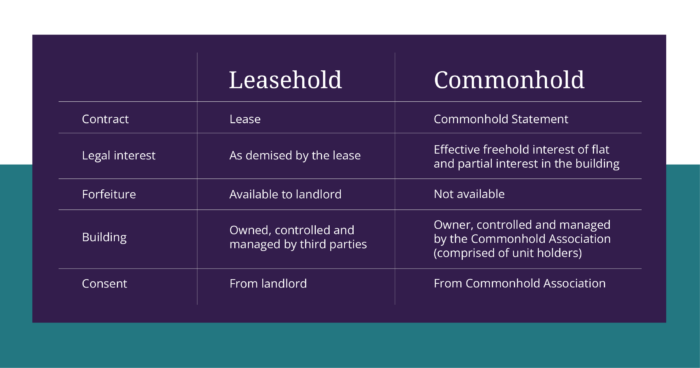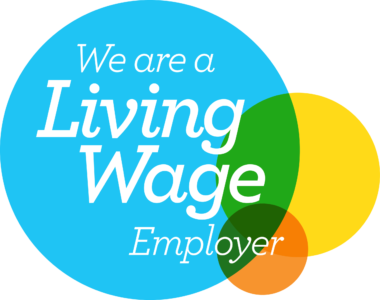The Commonhold White Paper, published on 3 March 2025, proposes a new model for homeownership in England and Wales, describing commonhold as a modern home ownership structure, widely used around the world, that enables flats to be owned on a freehold, rather than leasehold, basis. Unlike a leasehold interest (which has a set life span of usually around 100 years), commonhold will ensure that homeowners can retain the value of their property interest rather than see it depreciate over time.

Originally introduced into law in 2002, commonhold has not (to date) established itself as a viable alternative to the centuries old freeholder/leasehold system with which we are all so familiar and comfortable. There are a variety of reasons for this but essentially the underlying legislation (Commonhold and Leasehold Reform Act 2002 (the 2020 Act)) failed to provide a workable framework sufficient to convince owners, developers and lenders alike that Commonhold would work for them. The recent White Paper, however, makes clear that the current Government is determined to reinvigorate commonhold by effecting changes to the 2002 Act with reference to a series of recommendations made in a Law Commission report in 2020 and by seeking input from the legal, property and lending communities.
We have to wait to see the draft bill later in the year to see the detail, but, in the meantime, we have the contents of the white paper and the Law Commission report which allow us some insight into what that bill may contain.
Current system and differences
To assist with explaining the differences between the present system of property ownership and commonhold, a few definitions are necessary:
| Commonhold | A form of freehold property ownership created in England and Wales to enable individual properties within a building or larger development to be owned on a freehold basis. |
| Contribution to shared costs | Sums that unit owners are required to pay towards the day-to-day running costs of the commonhold for instance paying for services provided and any ad hoc repairs required throughout the year. |
| Commonhold association | Company limited by guarantee which all unit owners and members of it manage is the commonhold and owns the common parts. |
| Commonhold community statement (CCS) | A standardised document which acts as the commonhold’s “rule book” setting out the rights and obligations of unit owners and the commonhold association. |
| Unit Owner | The freehold owner of an individual commonhold unit the freehold owner of an individual commonhold unit. |
| Voting | Unit owners may vote on various decisions relating to the commonhold, such as adding a local rule or agreeing the annual budget. Some voting matters will require 50% support from members (an ordinary resolution) whilst some require 75% support (a special resolution). |
Under the current system a freeholder owns the building and the tenants own leases of the flats contained within the building. Those leases are contracts between the freeholder as landlord and the occupier of the flat as tenant, granted for a fixed contractual term of usually around 100 years and the terms of which govern the relationship between the parties, how the tenant occupies the flat, and how the landlord will look after the building.
The landlord is responsible for communal repairs and upkeep of the structure of the building and recovers the costs of that via a service charge to the tenants.
In turn the tenant must keep the flat itself in repair, pay a ground rent and contribute to the service charge and seek landlord’s consent to carry out works.
The alternative of commonhold has no landlord or tenant, and no lease; rather these are replaced by a commonhold association and unit owners (the latter being members of the former such that ownership of the building is effectively in the hands of the unit owners), and a CCS. It is a form of freehold ownership where individual owners will own their unit outright, with no expiring term (the freehold of their unit) and together they share ownership of the communal areas through the commonhold association.
The CCS sets out the rights and obligations of unit owners and the commonhold association, being a long form contractual document containing a standardised set of rules. Additionally, there are shorter form, tailored documents which set out specific basic details for each unit. The form of the CCS is not set in stone and there is a degree of flexibility which allows an association to create “local rules” specific to the commonhold building to which the CCS related. Additionally, unit holders as member of the association can use their voting rights to amend the CCS as required to better suit the management of the commonhold building and/or the requirements of the unit holders.
The commonhold association (a limited company, registered at Companies House) owns and manages the fabric and common areas of the commonhold building. All unit owners are members of the association, and some will take the roles of directors (in some circumstances a professional director may be appointed). The association can undertake these functions itself, or it can retain a managing agent to assist with some or all of the administration. Unlike a traditional landlord/tenant situation where an agent is retained by the landlord solely, in a commonhold situation the agent is also answerable to the unit owner directly.
Under the commonhold system there is no concept of forfeiture (the process by which a lease can be terminated by a landlord if the tenant commits a breach). Instead, under the commonhold system, where a unit owner fails to comply with their obligations, the commonhold association will have the power to force a sale of the unit by the unit holder (the proceeds of which the seller will retain).
Each prospective purchaser of a unit will be provided with a common hold unit information certificates (CUIC) by the commonhold association that sets out information on any arrears to contributions to shared costs attached to the specific unit.
Other jurisdictions
Property law can be complex and constantly evolves over time to effectively support the changing needs of buildings and the people that live in them. Many countries around the world that have introduced forms of commonhold have later introduced revisions and refinements. Leasehold law in this country is no exception. There have been multiple Acts of Parliament updating and reforming leasehold legislation over the last hundred years dating back to the 1925 Law of Property Act and beyond.
As the Law Commission highlighted as part of their review, forms of commonhold are the norm in many other parts of the world as the primary model of ownership for flats. Countries such as Australia and the USA first introduced legislation in the 1950s and early 1960s to provide commonhold type ownership for flats. “Strata title” is the Australian equivalent of commonhold. It was developed in New South Wales and was one of the first forms of such homeownership to be introduced in the world. Since then, strata title (or an equivalent system) has been adopted in other Australian states and across the globe, from New Zealand, to Singapore, to Canada. “Condominium” ownership is the North American equivalent to commonhold and is found across many parts of the USA and also in parts of Canada. Across parts of Europe forms of commonhold are known as “Condominio negli edifice” in Italy, “Copropriété” in France or “Wohnungseigentumgesetz” (or “WEG” for short) in Germany. These commonhold type models internationally have for many countries been the default for flatted development for some time. This includes use in buildings from small simple blocks of flats or flats in converted houses, to complex large buildings with a mixture of residential and commercial units as found in major cities across the world.
The concept of commonhold has existed in England and Wales for over two decades but to date commonhold has proved to be a workable alternative, as it has been in other countries. The proof being that over the last 20 years there have only been approximately 20 commonhold associations constituted. In order to reinvigorate the concept of commonhold and make it a viable alternative to the present leasehold ownership structure, the Government appears determined to reform the legal framework.
Commonhold will not necessarily signal the end of leasehold as leasehold and commonhold are two distinct models of property ownership for flats. The white paper envisages that the commonhold system will apply to new properties; over time the success of the new regime will be assessed to determine whether conversion from leasehold to commonhold would be viable. The provisions currently in place do not adequately deal with scenarios where not all of the flat owners want to convert to commonhold and the system by which that will happen needs to be considered in more detail. At present there would be the possibility that a two tier system within the same development could be created, which would not be ideal for either landlords or tenants. Equally, were conversion to commonhold to be mandated then the landlord’s asset value would need to be compensated, an issue that has yet to be fully addressed.
Summary
The Government seems to determined to see this through, describing commonhold as a simple democratic model, where a community of homeowners (and commercial owners where a building is mixed use) come together to collectively decide how to run their building.
Our next articles will seek to explore some of the interesting and perhaps difficult concepts of commonhold in more detail including how commonhold will change things for leaseholders and for freeholders and some of the unintended consequences that the introduction of commonhold may cause.
The content of this article is for general information only. It is not, and should not be taken as, legal advice. If you require any further information in relation to this article please contact the author in the first instance. Law covered as at May 2025.









